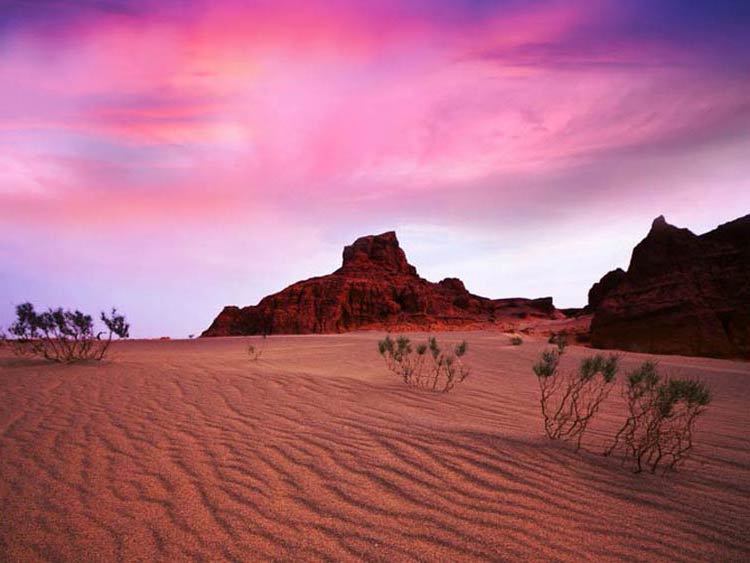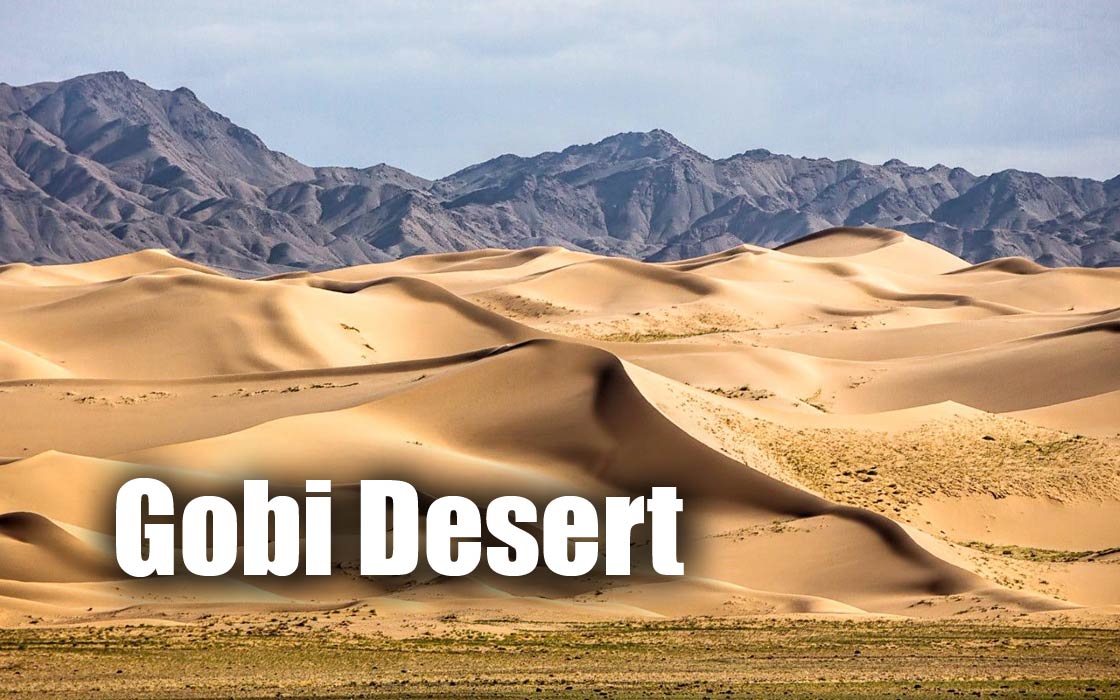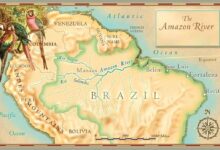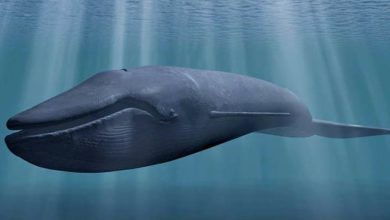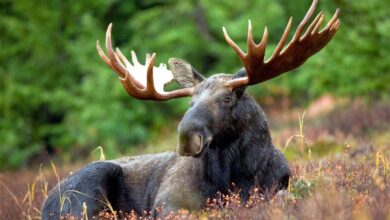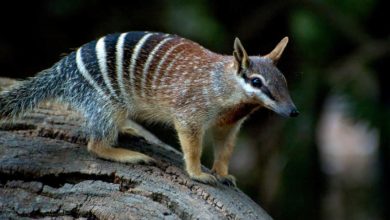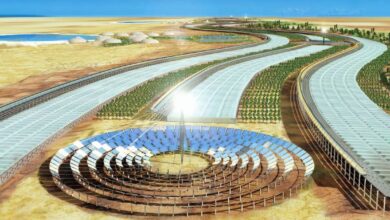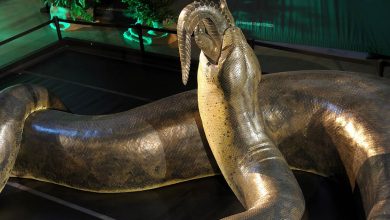Gobi – The Largest Desert in Asia
Stereotypically, a desert is associated with sand and dunes stretching to the horizon. However, not every desert is sandy. In the case of the Gobi, dune areas occupy only five percent of its total surface. This work of Mother Nature has been sculpted from stones, gravel, steppes, and mountain ranges. Apart from camel herders, there are hardly any people here; sometimes, one only encounters travelers seeking a break from civilization. They traverse Gobi to witness the most magical sunrises and sunsets, climb the surrounding rocks, and observe the wild, raw nature untouched by civilization.
Gobi is the largest desert in Asia and the second largest in the world after the Sahara (not counting Antarctica). Apart from ice deserts, there is no other such desert located so far north. If you come here in winter, you might be lucky enough to see snow, which falls here quite often and regularly – it is one of the most captivating phenomena in these areas.
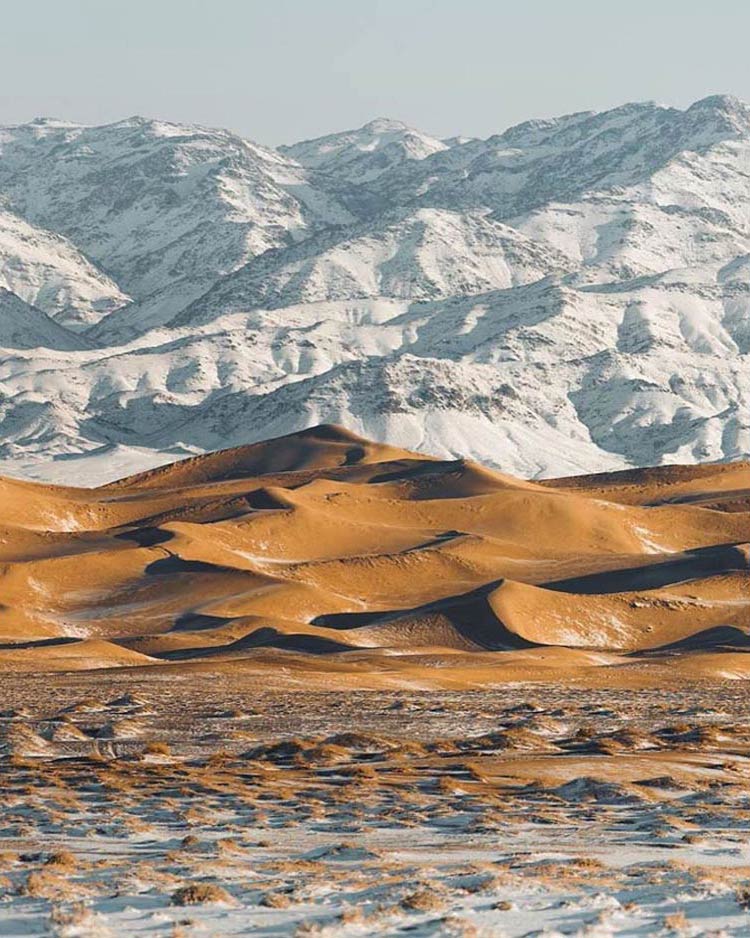
One of the Harshest Climates
Gobi Desert boasts one of the most extreme and deadly climates on our globe. This is all due to its geographical location. It is situated in East Asia, within the territory of China (to the south) and Mongolia (to the north). It stretches over an area of almost 1.3 million square kilometers (approximately 502,000 square miles), which gives an idea of how vast this area is and how diverse it is.
In the north, the Altai Mountains rise like a barrier. To the south, the Mongolian Plateau stretches out. Gobi also borders the Tien-Shan and Nan-Shan mountains. Due to its enormous territorial expanse, it is sometimes referred to as an endless sea because it seems to never end. Due to its harsh climate, it has also earned the designation of a “cold desert.”
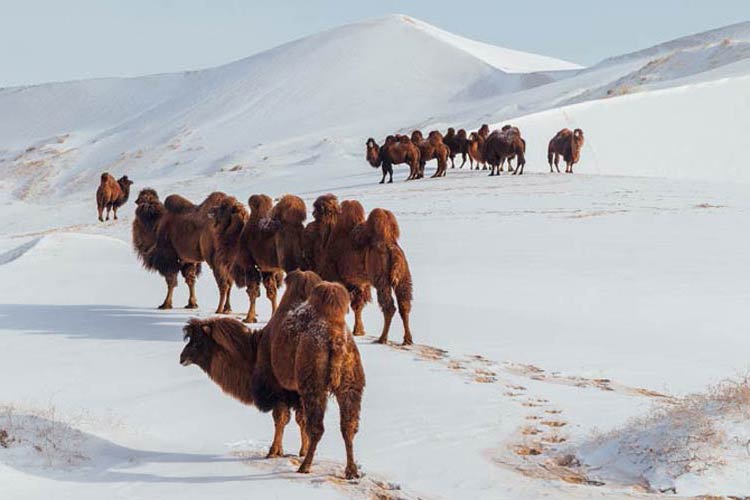
How cold is the Gobi Desert?
In winter, temperatures drop to even below −40°C (−40°F), and very cold and strong winds blow here, which makes Gobi feel like Antarctica. The January-February period is the perfect time to see snow here, and in considerable quantities. However, if you prefer warm climates, Gobi has temperatures above 40°C (104°F) to offer during the summer. However, such high temperatures only last during the day; at night, they drop below freezing again. This is one of the main factors characterizing this desert: huge temperature fluctuations both during the year (summer-winter) and during the day (day-night).
Such a climate is truly extreme. In addition, there is almost no rainfall in the Gobi. If 200 milliliters (approximately 6.8 fluid ounces) fall during the year, it is an enormous amount, as it happens that only 50 milliliters (approximately 1.7 fluid ounces) fall annually. Consequently, there are no permanent watercourses here in the form of rivers or streams. The lakes or streams that appear sporadically disappear as quickly as they appeared.
It rains so rarely and so sparingly in the Gobi because it is very far from the oceans, while nearby are mountains, and the highest on the planet, the Himalayas. They act somewhat like a natural climatic barrier and block moist air masses. When it blows strongly, the desert dries out even more and is subject to strong erosion. Dust storms also occur here due to the winds.

Relics of the Past
The Gobi once looked completely different than it does today. 200 million years ago, a large inland sea stretched here, and a mild climate prevailed, ideal for dinosaurs, for example. Thanks to this, many valuable fossils have been preserved here, which paleontologists continue to excavate and study to this day. Not only skeletons but also (for the first time in the 1920s) eggs were found in these areas – true rarities in the world of science! During the Late Cretaceous period, not only dinosaurs but also primitive mammals lived in the Gobi region. They had excellent living conditions here.
Archaeologists have repeatedly appeared and continue to appear in the Gobi as well. Stone was worked here as early as 100,000 years ago, for which much evidence has been found. Once, the Gobi areas were much more hospitable to humans, who wandered across today’s steppes, semi-deserts, and highlands, and also established settlements on the lakes that existed at that time. Today, the Gobi is a continental desert with a deadly climate, almost cut off from water in any form. It lies at an altitude exceeding 1,000 meters (3,280 feet) above sea level in some places. Mountain ranges also rise here, exceeding 2,000 meters (6,560 feet) above sea level.
The Gobi also occupies an important place on the world’s trade map. It was right next to it that the Silk Road ran, so important during the time of the Mongol Empire. The railway line connecting Ulaanbaatar with Beijing also passes through the Gobi.
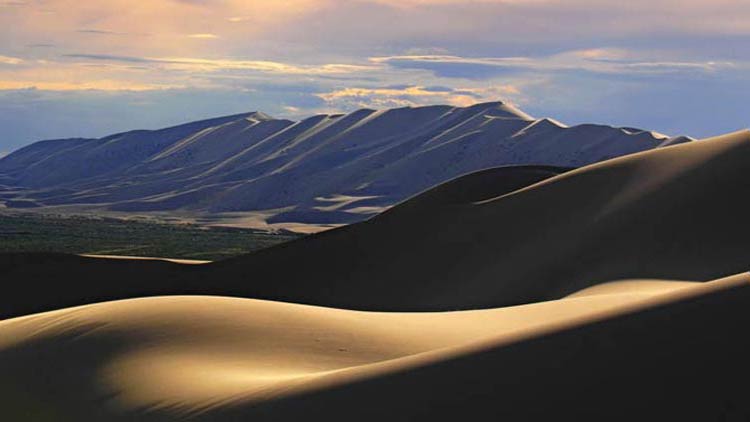
Fauna and Flora of Gobi Desert
Even in the most unfavorable climate, life can be found, and the Gobi is no exception here. Although significant areas are occupied by rocky debris, elevations, and basins with salty, intermittent lakes and dry valleys, vegetation has managed to cope. The fact that although the Gobi has an extremely continental climate with almost no rainfall, it has rich resources of shallow groundwater, was undoubtedly significant. Mainly xerophytic shrubs and dwarf shrubs grow here, including Ephedra, Krascheninnikovia, Haloxylon, and desert elm (Ulmus pumila). Halophytes are also found here, and in the north, in the steppe and semi-desert areas, wormwood (Artemisia) and pea shrub (Caragana) species grow.
Among the animals in the Gobi Desert, we can of course find camels (two-humped, i.e., Bactrian camels), kulans (also called Asiatic wild asses), snow leopards (Panthera uncia) (also known as ounce), and Przewalski’s horse (Equus ferus przewalskii) – the only currently living wild species of horse. There are breeding programs for it in the Gobi, aimed at saving this extraordinary animal. We will also encounter yaks, pikas, ibex, bears, white-tailed eagles (Haliaeetus albicilla), gazelles, and wild sheep.
Interestingly, there are also vineyards in the Gobi! Wine matures peacefully, sometimes less than one hundred meters (328 feet) from sand dunes. The Gobi is also rich in natural resources such as crude oil, hard coal, rock salt, and iron and copper ores. The Chinese cosmodrome, as well as a space and aviation base, are also located within the desert.
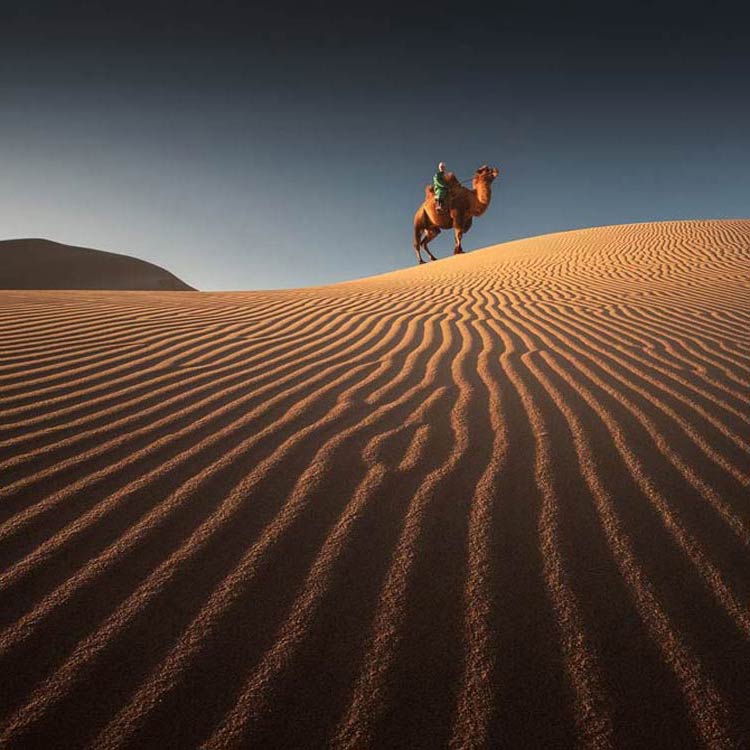
Gobi Gurvansaikhan National Park
This park is located in Mongolia and simultaneously in the northern areas of the Gobi Desert. According to the territorial division of Mongolia (instead of states or provinces, they have aimags), the Gurvan Saikhan National Park is located in the territory of the South Gobi and Bayankhongor aimags.
Currently, after the “addition” of territories, the park has become the largest in all of Mongolia. The terrain is very diverse, but primarily mountainous (it is the area of the Gobi Altai). Here, you can find ancient volcanic cones, sandstone cliffs, sand dunes, and salt lakes. The dunes are a landmark not only of the park but of the entire country and can reach over 100 meters (328 feet) in height (and they change color depending on the lighting). The Valley of the Eagles – Yolyn Am – is very popular. It is a spectacular gorge, and in some of its parts, snow can be seen all year round. There is also a dinosaur cemetery within the park.
In the park, you can encounter snow leopards, wolves, wild sheep, and even Siberian ibex. These are primarily inhabitants of the mountainous areas. Further down, in the steppe areas, there are foxes, kulans, pikas, and jerboas. In the vicinity of the gorge, on the other hand, many bird species live, including bearded vultures, wallcreepers, desert finches, and cinereous vultures.
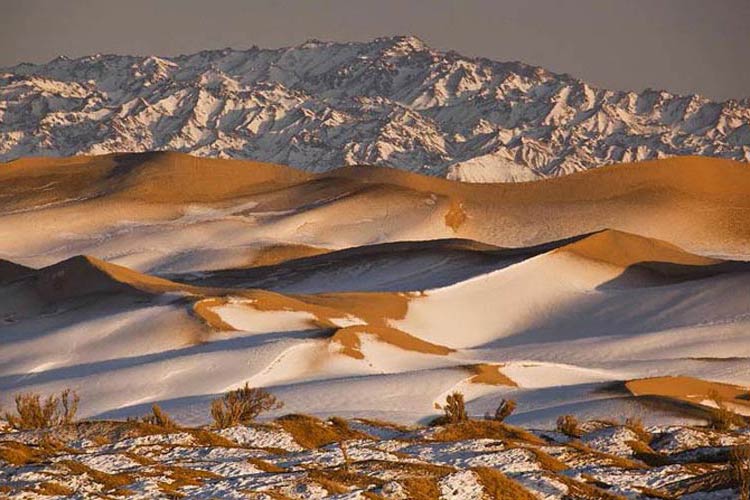
Detailed Data
Gobi Desert in Numbers
- Area: 1,295,000 km2 (500,000 square miles)
- The approximate dimensions of the Gobi Desert: 1500 kilometers (932 miles) in length and 800 kilometers (497 miles) in width.
- Rainfall in the Gobi is 50-200 milliliters (approximately 1.7 – 6.8 imperial fluid ounces) per year, which is very little.
- The desert lies at an altitude of 900 – 1120 m above sea level (approximately 2,953 – 3,675 feet above sea level).
- Climate in the Gobi is extreme. The temperature range is over 40°C (104°F) in summer and −40°C (−40°F) in winter.
- Winds in the Gobi reach speeds of up to 120 km/h (approximately 75 mph).
- 200 million years ago, there was an inland sea in the area of the desert.
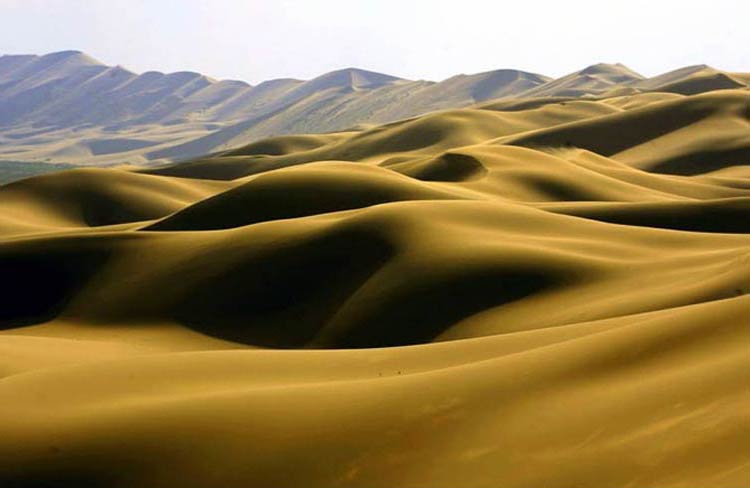
Gobi Desert – Interesting Facts
- Gobi Desert is constantly expanding, taking over 3,500 km2 (approximately 1,350 square miles) of China’s territory each year. This is a result of poor land management in these areas and the diversion of water to cities. The government is trying to save the situation and is building the Great Green Wall of China, which consists of artificially planted forests.
- There is almost no sand in the Gobi Desert, but what sand is there forms spectacular belts and high dunes, of which all of Mongolia is proud.
- Gobi comprises as many as five ecological regions.
